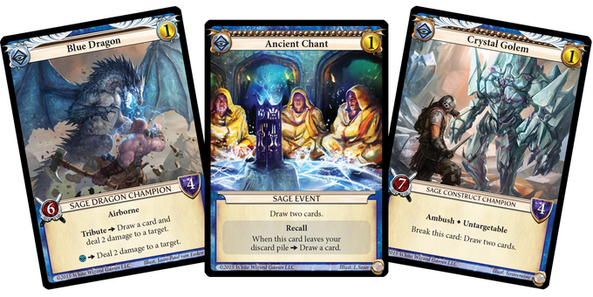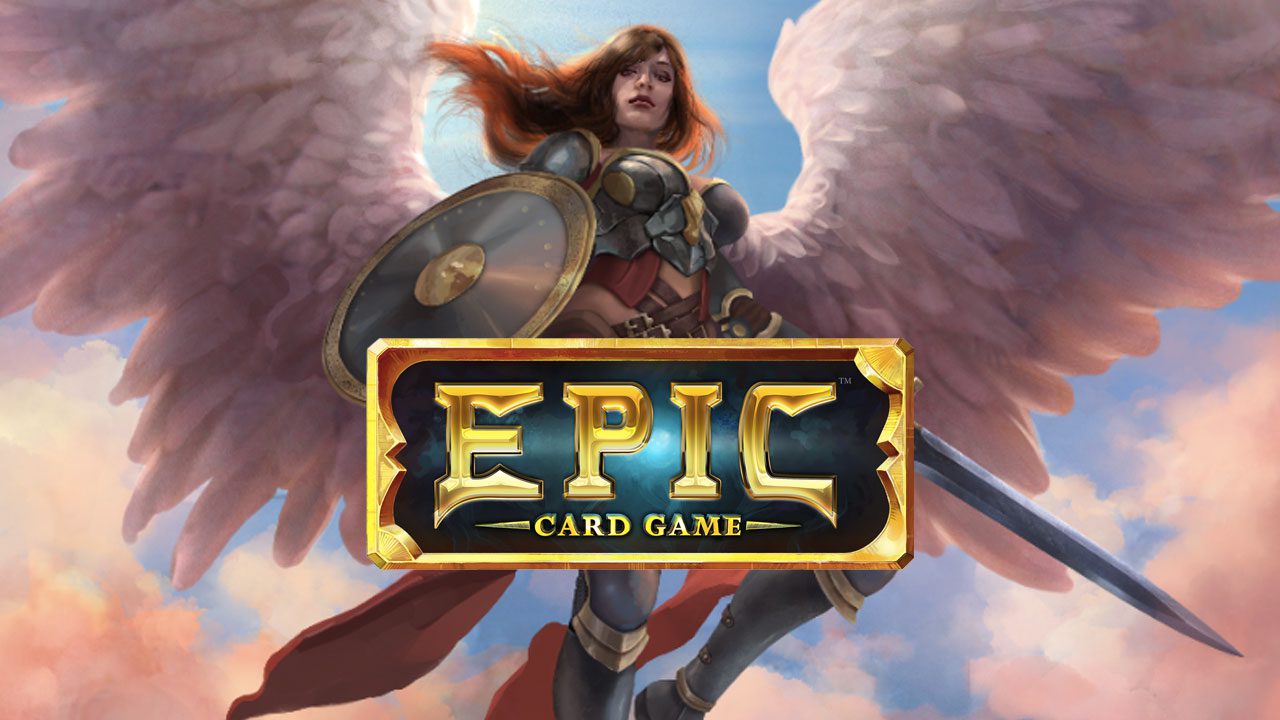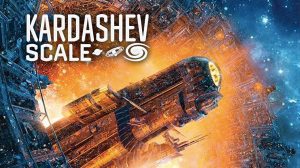Before loot boxes in video games, there were booster packs for card games. Collectible card games are “lifestyle” games where you are committed to buying the latest cards to stay competitive. At first glance, CCGs appears to be a cash grab. However, there are intriguing design and mechanical fundamentals that made card brawler games like Magic the Gathering maintain a loyal audience. Epic the Card Game seeks to simulate the traits of card brawlers without the “collectible” aspect. Every “starter deck” is the same, and mini-booster packs are fixed, not randomized. All of this sounds like a great concept, but good ideas are nothing without proper execution.
Much like Magic the Gathering, Epic the Card Game is about two powerful entities who want to murder each other. This will involve you casting spells, executing events, and summoning champions to do your bidding. You win the game once your opponent loses all of their life points or they cannot draw any more cards from their deck.
Following the Same Footsteps
While the concept sounds very similar to other card brawlers, there are distinguishing features that give Epic its own identity. Instead of mana or an escalating resource, players get a single gold coin to spend each turn to play a powerful card. This gold coin does not accumulate if you don’t spend it, and it refreshes at the start of every turn. There are free 0-cost cards, and you can play as many as you like.
As for the card themselves, they live up to the game’s name. Every single card does something ridiculous that would be considered broken in every other game. You have cards that can turn all champions into zombies, deliver everyone a comical amount of damage, or summon all of the champion cards in everyone’s discard pile back into the game. What makes this even stranger is none of the cards in this game feel broken once you understand the relationships between the cards.

Draw, Play Cards, Repeat
Game flow is somewhat similar to other card brawlers. On your turn, you draw a card, and you decide what to play. Champions are your creatures that will do the attacking and defending. Event cards are your standard spell-like abilities where you play it for the text effect and discard them. The big difference in Epic is the lack of structure on your turn as you don’t follow a fixed path of phases. Instead, you choose what type of actions you like to perform on your turn in a freeform style. To give one example, if I have ten champions, I can attack ten times if I want to. I can also attack three times, play two events, summon another champion, and attack with a group of two champions, and end my turn. It does take some time to get used to this flexibility, but it is a welcome change.
Timing is a crucial aspect that you cannot ignore. Events cards are played on your opponent’s turn under certain conditions, and any champions with the “Ambush” keyword are treated as event cards. You won’t find “instants” or “interrupts” in this one. That is replaced with windows of opportunity.
One of the most striking ways to play events cards on your opponent’s turn is during the battle phase. Whenever you start a fight, a series of phases will happen. You would choose your attackers as expected. After picking your attackers, you and your opponent have the opportunity to play event cards. Your opponent will then declare blockers, and just before you deal damage, your opponent can play event cards followed by you. After the declarations, the damage is dealt with and marks the end of the battle phase. When you announce that you want to end your turn, this also triggers another opportunity for your opponent to play events.
As you can tell, event cards are a vital component in Epic. Controlling the moments when your opponent can play their cards is critical to your victory. A highly aggressive playstyle means giving your opponents several opportunities to counter your attack or summon more champions on the field when it isn’t even their turn. You also get a gold coin during your opponent’s turn, and you’ll learn very quickly that spending your gold coin recklessly before your opponent can often lead to disastrous plays.

Predictable Gameplay
While all these mechanisms sound great on paper, the execution leaves a numb and dry feeling. You’ll find that most of the event cards or creature abilities are often focused on outright removing your champions from play or dealing massive damage, thus constantly shifting the game state at a ridiculous magnitude. Many champion cards with the “Ambush” keyword will sometimes summon other weak champions or unpleasant effects, leading you to regret your decision to make the attack.
At first, it is cute to see these cascades of effects take place as you discover just how far this game is willing to go. It is also an understandable design decision since the game makes it easy to summon champions, so it should be easy to remove them. Once conditioned to the system and how it plays, the game moves at a glacial pace. Since a mistimed attack is punishing with very little information on how bad the blowback will be, the best course of action is to play defensively. You’ll summon very few champions and won’t attack unless you have something in your hand to counter their potential counter. It is a game of chicken with blindfolds thrown in and a prayer or two. The rigid structure robs any bit of creativity, which is the antithesis of what players expect in a CCG-like game.
The Top Ain’t All That
To further emphasize my point, I watched some Twitch streams of top Epic players and White Wizard games using the Epic Card Game app. What they were doing in their games wasn’t much different than what I was doing. They followed the same criteria: Have a big hand to be flexible, be very defensive, and avoid spending a coin before your opponent. It’s strange to observe a high-level game go through the same tactics and arcs as a low-level game.
Since this game wants to shove you into a box, this is not a game I would recommend unless you enjoy this particular defensive playstyle or think Magic the Gathering is the height of game design.
I wish I didn’t have these feelings towards this game. This was a game I kickstarted a few years ago because I wanted a good card brawler without continuous purchases. Ever since the game’s release, there have been several card games that break free from Magic’s design shackles, such as Keyforge, while Epic prefers to keep them on.
You can purchase Epic The Card Game at Amazon US












Good review. And thanks to you, I now know to avoid this one — very helpful info!
Appreciate this thoughtful review that was candid about strengths and weaknesses. White Wizard Games (now Wise Wizard Games, because… because the word “white” may have uncomfortable connotations among some of the players expected to purchase this title) also publishes Star Realms, and over the years they’ve added a number of expansions that have bloated it without equally interesting or novel player decisions. The base game remains engaging for an entry-level deck builder, accessible to everyone.
WWG also needs to learn how to manage their KS campaigns in a more efficient manner. COVID delayed everything but this was out of proportion to other projects that fulfilled under the same conditions.